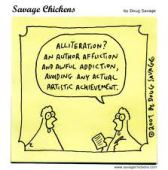 As our regular readers know, SRxA’s Word on Health loves nothing more than a good alliteration to start the day! Although the blog post title may rank as one of our more classic tongue twisters, there is nothing amusing about the content. As involved as we are in medical communications and peer-reviewed, scientific publishing, we are saddened to report on the rise of a recent trend of falsified research. An unsettling pattern is emerging. The rate at which articles are retracted (meaning the study was published, only to later be dubbed unfit for print — typically due to either deliberate misconduct or an honest scientific mistake) is increasing. To our knowledge, at least three scientific journals have published articles over the past two years warning of the rise in retractions and misconduct by researchers who have fudged results.
As our regular readers know, SRxA’s Word on Health loves nothing more than a good alliteration to start the day! Although the blog post title may rank as one of our more classic tongue twisters, there is nothing amusing about the content. As involved as we are in medical communications and peer-reviewed, scientific publishing, we are saddened to report on the rise of a recent trend of falsified research. An unsettling pattern is emerging. The rate at which articles are retracted (meaning the study was published, only to later be dubbed unfit for print — typically due to either deliberate misconduct or an honest scientific mistake) is increasing. To our knowledge, at least three scientific journals have published articles over the past two years warning of the rise in retractions and misconduct by researchers who have fudged results.
 Last year Nature reported a tenfold increase in retractions over the past decade even though the number of published papers only increased by 44%. Before that, the Journal of Medical Ethics published a study in 2010 that said a rise in recent retractions was the fault of misconduct and “honest scientific mistakes.” It calculated that the number of retractions had more than tripled from 50 in 2005 to 180 in 2009.
Last year Nature reported a tenfold increase in retractions over the past decade even though the number of published papers only increased by 44%. Before that, the Journal of Medical Ethics published a study in 2010 that said a rise in recent retractions was the fault of misconduct and “honest scientific mistakes.” It calculated that the number of retractions had more than tripled from 50 in 2005 to 180 in 2009.
The latest publication to highlight this issue is Infection and Immunity. In the fall of 2010, Dr. Ferric C. Fang, editor in chief of the journal made an unsettling discovery – one of his authors had doctored several papers.  The journal wound up retracting six of the papers from the author, Naoki Mori of the University of the Ryukyus. It soon became clear that Infection and Immunity was hardly the only victim of Dr. Mori’s misconduct. Since then, according to the blog Retraction Watch, other scientific journals, including the International Journal of Cancer have retracted another 24 of his papers. This was a new experience for Fang. Prior to this incident Infection and Immunity had only retracted nine articles over a 40-year period. “Nobody had noticed the whole thing was rotten,” said Fang, a professor at the University of Washington School of Medicine.
The journal wound up retracting six of the papers from the author, Naoki Mori of the University of the Ryukyus. It soon became clear that Infection and Immunity was hardly the only victim of Dr. Mori’s misconduct. Since then, according to the blog Retraction Watch, other scientific journals, including the International Journal of Cancer have retracted another 24 of his papers. This was a new experience for Fang. Prior to this incident Infection and Immunity had only retracted nine articles over a 40-year period. “Nobody had noticed the whole thing was rotten,” said Fang, a professor at the University of Washington School of Medicine.  Dr. Fang became curious how far the rot extended. To find out, he teamed up with a fellow editor at the journal, and before long they reached a troubling conclusion: not only that retractions were rising at an alarming rate, but that retractions were just a manifestation of a much more profound problem.
Dr. Fang became curious how far the rot extended. To find out, he teamed up with a fellow editor at the journal, and before long they reached a troubling conclusion: not only that retractions were rising at an alarming rate, but that retractions were just a manifestation of a much more profound problem.
Dr. Fang’s colleague, Dr. Arturo Casadevall, said he feared that science had turned into a winner-take-all game with perverse incentives that led scientists to cut corners and, in some cases, commit acts of misconduct. Last month, in a pair of editorials in Infection and Immunity, the two editors issued a plea for fundamental reforms. While no one claims that science was ever free of misconduct or bad research, the new raft of retractions appears to be a mix of misconduct and honest scientific mistakes. Several factors are at play here, scientists say. One may be that because journals are now online, bad papers are simply reaching a wider audience, making it more likely that errors will be spotted. But other forces are more pernicious. To survive professionally, scientists feel the need to publish as many papers as possible, and to get them into high-profile journals. And sometimes they cut corners or even commit misconduct to get there. To measure this claim, Drs. Fang and Casadevall looked at the rate of retractions in 17 journals from 2001 to 2010 and compared it with the journals’ “impact factor,” – a score based on how often their papers are cited by scientists. The higher a journal’s impact factor, the higher its retraction rate. The highest “retraction index” in the study went to one of the world’s leading medical journals, The New England Journal of Medicine. 
The scramble to publish in high-impact journals may be leading to more and more errors. Each year, every laboratory produces a new crop of Ph.D.s, who must compete for a small number of jobs, and the competition is getting fiercer. In 1973, more than half of biologists had a tenure-track job within six years of getting a Ph.D. By 2006 the figure was down to 15 percent. In such an environment, a high-profile paper can mean the difference between a career in science or leaving the field. The scramble isn’t over once young scientists get a job. “What people do is they count papers, and they look at the prestige of the journal in which the research is published, and they see how many grant dollars scientists have, and if they don’t have funding, they don’t get promoted,” Dr. Fang said. “It’s not about the quality of the research.”
With all this pressure on scientists, they may lack the extra time to check their own research. Instead, they have to be concerned about publishing papers before someone else publishes the same results. Adding to the pressure, thousands of new Ph.D. scientists are coming out of China and India, countries that offer cash rewards to scientists who get papers into high-profile journals.  Dr. Fang worries that the situation could be become much worse if nothing happens soon. To change the system, Fang and Casadevall say graduate students need a better understanding of science’s ground rules. They would also move away from the winner-take-all system, in which grants are concentrated among a small fraction of scientists by putting a cap on the grants any one lab can receive. A little bit of old fashioned honesty wouldn’t hurt either!
Dr. Fang worries that the situation could be become much worse if nothing happens soon. To change the system, Fang and Casadevall say graduate students need a better understanding of science’s ground rules. They would also move away from the winner-take-all system, in which grants are concentrated among a small fraction of scientists by putting a cap on the grants any one lab can receive. A little bit of old fashioned honesty wouldn’t hurt either! 